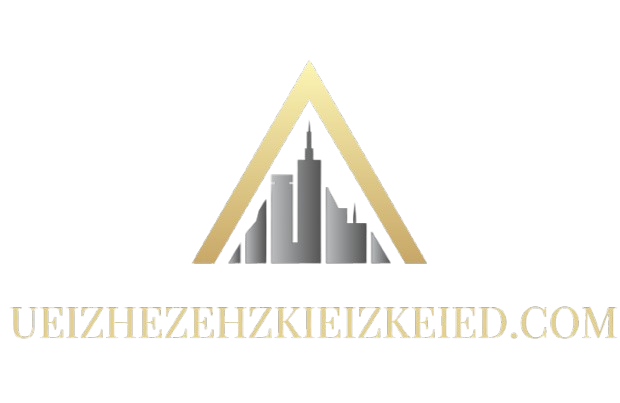Understanding Workplace Dress Codes
Workplace dress codes are crucial in establishing a professional atmosphere and fostering appropriate employee behavior. These guidelines vary widely across industries, leading to distinct categories such as business formal, business casual, smart casual, and casual. Each type has its characteristics and serves different purposes, thus influencing how employees present themselves in professional settings.
Business formal is the most stringent dress code, typically required in industries such as law, finance, and corporate environments. This style often includes tailored suits, dress shirts, ties for men, and formal dresses or suits for women. Maintaining this standard conveys professionalism and authority, which is particularly vital in client-facing roles.
Business casual offers a more relaxed approach while still adhering to professional standards. This category is prevalent in sectors like technology and education, allowing for slacks, polo shirts, or blouses without the need for a tie or formal blazer. It permits employees to express personal style while remaining appropriate for an office setting.
Smart casual merges elements of casual and formal attire, often seen in creative industries. This invites a stylish yet professional appearance, incorporating items such as blazers with jeans or elegant tops paired with tailored trousers. The aim is to demonstrate a polished finish while providing room for individual expression.
Finally, casual dress codes, often found in startups or more relaxed work environments, provide the greatest flexibility. However, it remains crucial to assess company culture and the context of specific occasions. Understanding and adhering to these dress codes not only reflects respect for workplace standards but also fosters a positive work environment. Employees should carefully interpret clothing guidelines communicated by employers and adapt their personal style within these frameworks, ensuring their appearance aligns with professional expectations.
Building a Versatile Wardrobe
Creating a versatile wardrobe is critical for anyone looking to dress professionally and stylishly in the workplace. A well-rounded collection of clothing not only allows for easy mixing and matching, but also enables individuals to adapt to various work environments and occasions effortlessly. There are several key items that should serve as the foundation of this wardrobe.
First and foremost, tailored blazers are essential. These versatile pieces can elevate any outfit and provide a polished look. A classic blazer can be paired with dresses, skirts, or smart trousers, making it suitable for both formal meetings and more casual office settings. It’s crucial to choose a blazer with a good fit, as it offers both comfort and a refined silhouette.
Next, high-quality button-up shirts are indispensable. They come in various colors and patterns, which means they can be paired with different bottoms for a fresh look while maintaining professionalism. Opt for fabrics such as cotton or silk that provide comfort without compromising on style. Mixing a crisp white button-up with vibrant trousers can create a striking contrast ideal for any work event.
Smart trousers are another vital element of a professional wardrobe. A well-fitted pair can be worn in multiple settings, from an important presentation to a casual Friday. Dark colors, such as black, navy, or charcoal, tend to be versatile and easier to coordinate with other items in your wardrobe.
Lastly, stylish flats or heels should not be overlooked. Comfortable yet chic footwear can make a significant impact on one’s overall appearance. Investing in a few pairs in neutral tones will ensure that they match various outfits seamlessly.
Quality and fit are paramount in building a professional appearance. Selecting garments that are well-structured and tailored not only enhances comfort but also instills confidence in the wearer. By focusing on these foundational pieces, individuals can create a versatile wardrobe that is suitable for diverse professional environments.
Accessorizing for Impact
Accessorizing is a critical component of workplace fashion that can elevate a professional outfit without sacrificing its integrity. Selecting the right accessories can enhance both your appearance and confidence, allowing you to express your personality while maintaining an overall polished look. However, the key lies in striking the right balance between style and professionalism.
When it comes to jewelry, opt for understated pieces that complement your outfit rather than overpower it. Simple stud earrings, delicate necklaces, and minimalistic bracelets can add a touch of elegance without being distracting. Avoid oversized or flashy jewelry that can draw attention away from your professional image. Additionally, consider materials and colors that are appropriate for your workplace environment; for instance, silver and gold tones often work well in corporate settings.
Bags are another essential accessory, and selecting one that is both functional and stylish can enhance your overall look. A classic tote or structured satchel in neutral colors can convey professionalism while providing ample space for your work essentials. Avoid overly casual bags or those with excessive embellishments, which may seem out of place in a professional setting.
Belt choice can also make a significant impact on your appearance. A well-fitted belt in quality materials adds structure to your outfit, particularly when tucked in shirts or blouses. Steer clear of overly decorative belts; simple designs or classic colors are generally more appropriate.
Scarves and ties can be excellent for adding personal flair to your outfit. A silk scarf can be elegantly tied around the neck or added to a bag for color and texture, while a well-chosen tie can instantly elevate a professional ensemble. Focus on that harmoniously match your outfit to reinforce a cohesive look.
Ultimately, accessorizing is about enhancing your workplace attire while respecting the environment in which you work. By adhering to these guidelines, you can effectively convey your personal style and professionalism through thoughtful accessory choices.
Navigating Seasonal Changes and Trends
Adapting workplace fashion throughout the seasons requires a strategic approach to maintain professionalism while also embracing contemporary trends. During colder months, layering is key to achieving both warmth and style. A fitted turtleneck beneath a tailored blazer can provide an elegant look that balances comfort and professionalism. Opt for materials such as cashmere or merino wool, which offer insulation yet remain refined. Incorporating structured outerwear, like trench coats or tailored overcoats, not only adds a chic element but also allows for easy transitions between various settings within the workplace.
As the temperatures rise in the summer months, the emphasis shifts towards lighter fabrics that promote breathability without compromising the overall aesthetic. Look for blouses or shirts made from linen or cotton, which provide a polished appearance while keeping one cool. Lightweight trousers or skirts, especially those in neutral tones, can easily be paired with short-sleeved tops for a professional look suitable for warmer workplaces. Transitioning outfits from casual to formal may also require attention to accessory choices, such as swapping a casual tote for a structured handbag or elevating footwear to more sophisticated options.
Maintaining style while ensuring comfort is an essential consideration year-round. Footwear should offer adequate support, especially in business environments that require prolonged standing or walking. Brands that prioritize ergonomics without sacrificing aesthetic appeal can be excellent choices. Seasonal shopping should also consider the longevity and versatility of items; classic styles in adaptable colors are ideal for mixing and matching across different seasons. By prioritizing these elements, it is possible to cultivate a professional wardrobe that remains both stylish and comfortable, catering effectively to the fluctuations of the seasons.






